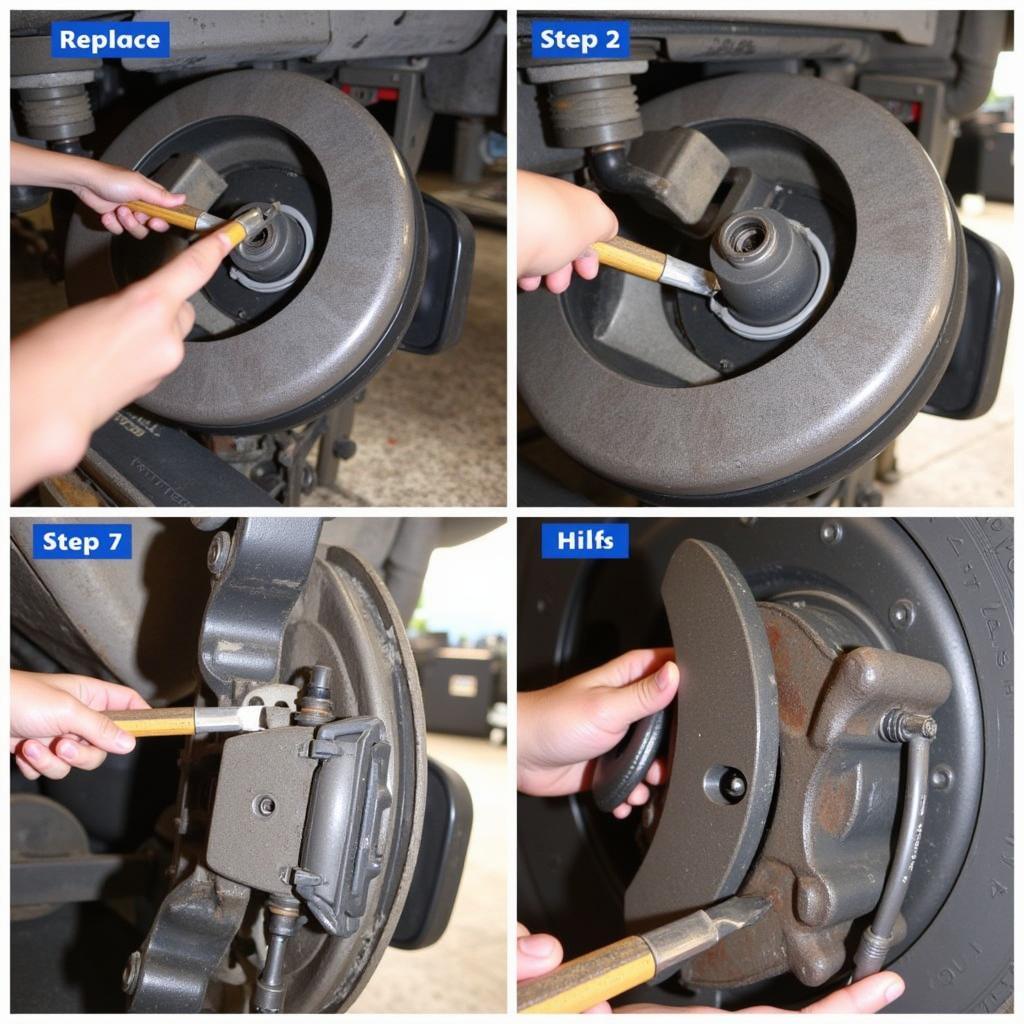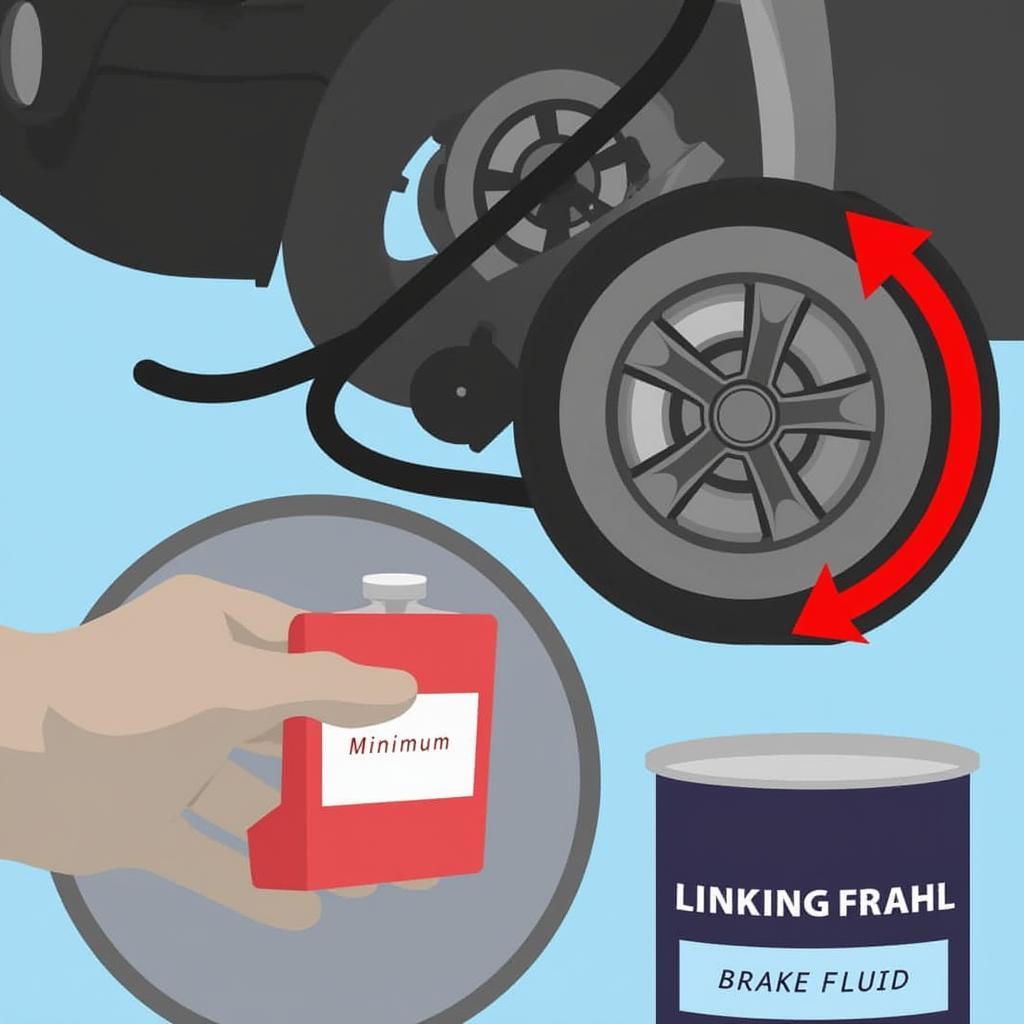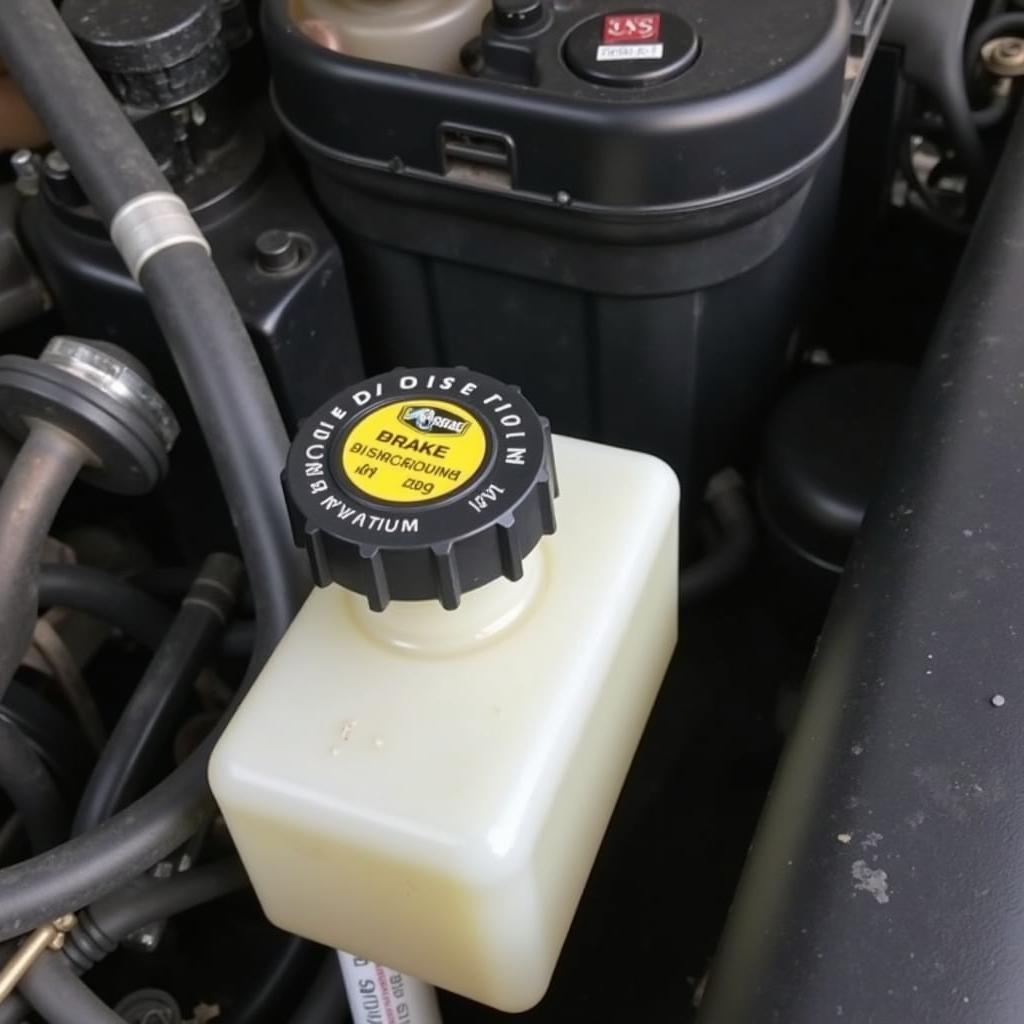The dreaded discovery 3 brake pad warning light can be a source of anxiety for any Land Rover owner. Understanding what triggers this light and how to address the underlying issue is crucial for maintaining your vehicle’s safety and performance. This guide provides a comprehensive overview of the discovery 3 brake pad warning light, covering everything from diagnosis to solutions.
Dealing with a persistent brake pad warning light can be frustrating. For a quick fix, consider checking out the Discovery 3 brake pad warning light reset procedure. discovery 3 brake pad warning light reset This can help resolve the issue if the warning light is triggered due to a sensor malfunction or a recent brake pad replacement.
Understanding the Discovery 3 Brake System
The Discovery 3 utilizes a sophisticated braking system designed for optimal performance both on and off-road. A key component of this system is the brake pad wear sensor, which triggers the warning light on your dashboard. This light serves as a crucial reminder that your brake pads are nearing the end of their lifespan and require attention.
Understanding the different components of your Discovery 3’s braking system is vital for accurate diagnosis. Beyond the pads and sensors, issues with the brake fluid level, ABS system, or even a faulty brake light switch can sometimes trigger the warning light.
 Discovery 3 Brake Pad Sensor Location
Discovery 3 Brake Pad Sensor Location
Diagnosing the Brake Pad Warning Light
When the discovery 3 brake pad warning light illuminates, the first step is to visually inspect your brake pads. Look for significant wear, especially if the pad material is thin or close to the metal backing plate. If the pads appear worn, it’s time for a replacement. However, the warning light can also be triggered by a faulty sensor, even if the pads are still in good condition.
A simple multimeter can be used to test the brake pad wear sensor’s continuity. If the sensor is faulty, it will need to be replaced. Remember to check both front and rear brakes, as the Discovery 3 has separate sensors for each axle.
For those experiencing brake warning light issues with older Discovery 3 models, refer to this guide specifically for the 2004 Land Rover Discovery Brake Warning Light. 2004 land rover discovery brake warning light
Replacing Brake Pads and Sensors
Replacing brake pads and sensors is a relatively straightforward process for those comfortable working on their vehicles. However, if you’re unsure, it’s always best to consult a qualified mechanic. Remember to use high-quality brake pads and sensors specifically designed for the Discovery 3. Using inferior parts can compromise braking performance and potentially lead to further issues.
 Discovery 3 Brake Pad Replacement
Discovery 3 Brake Pad Replacement
What if the Light Stays On After Replacing the Pads?
Sometimes, the discovery 3 brake pad warning light might remain illuminated even after replacing the pads and sensors. This can be due to a few reasons, such as a wiring issue, a faulty brake light switch, or a problem with the vehicle’s electronic control module. In such cases, further diagnosis with specialized diagnostic equipment is often necessary. More information regarding this issue can be found here: land rover discovery 3 brake pad warning light.
“A common oversight is forgetting to reset the brake pad warning light after a replacement,” notes John Smith, a seasoned Land Rover technician with over 20 years of experience. “A simple reset procedure using diagnostic software can often resolve this issue.”
Preventative Maintenance for Your Discovery 3 Brakes
Regular brake inspections are crucial for preventing premature wear and potential issues with the discovery 3 brake pad warning light. Check your brake pads and fluid levels at least every six months or as recommended in your owner’s manual. Addressing potential problems early on can save you time and money in the long run.
 Discovery 3 Brake Fluid Check
Discovery 3 Brake Fluid Check
If you are also experiencing issues with the Electronic Stability Control (ESC) and brake warning lights on your Range Rover, this resource may be helpful: range rover esc brake light warning. This guide can assist you in understanding the connection between these warnings and their underlying causes.
Conclusion
The discovery 3 brake pad warning light plays a critical role in maintaining your vehicle’s safety. Understanding its function and addressing the underlying issues promptly can prevent more significant problems down the road. By following the guidance in this article, you can ensure your Discovery 3’s braking system remains in optimal condition. Regularly inspecting your brakes and addressing any warning lights promptly is essential for safe and reliable driving. If you are unsure about any aspect of brake maintenance or diagnosis, seeking professional help is always recommended. Don’t ignore the discovery 3 brake pad warning light – it’s a vital indicator of your vehicle’s health. For a step-by-step guide on resetting the warning light, consider this helpful resource: land rover discovery 3 brake pad warning light reset.



